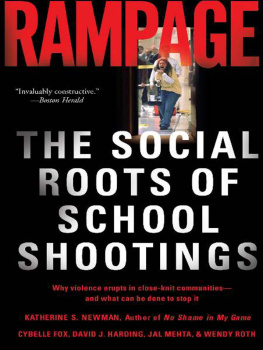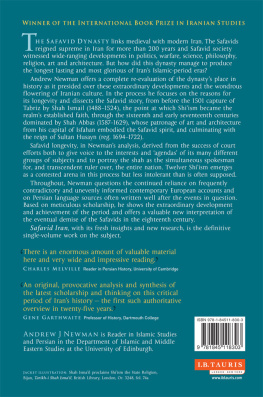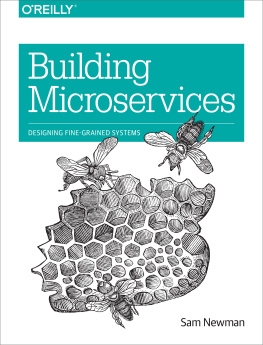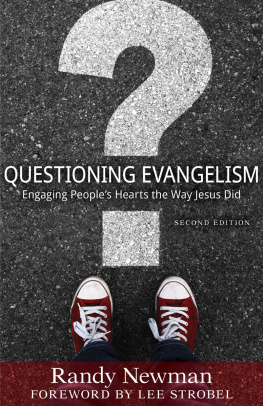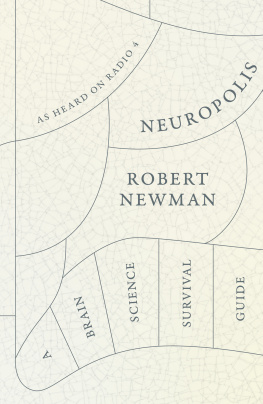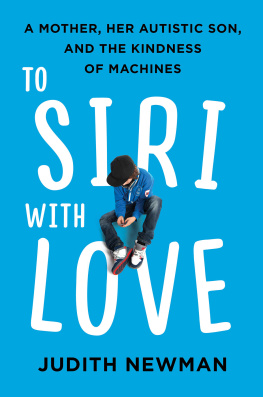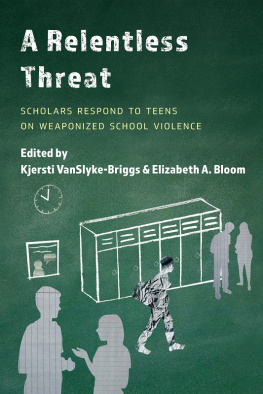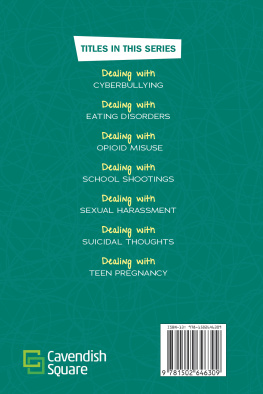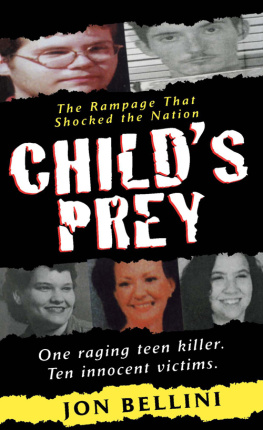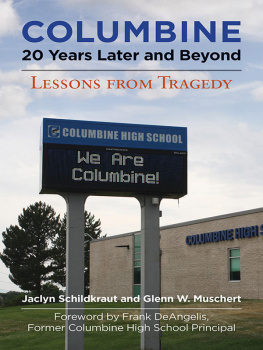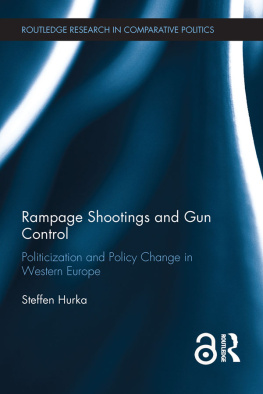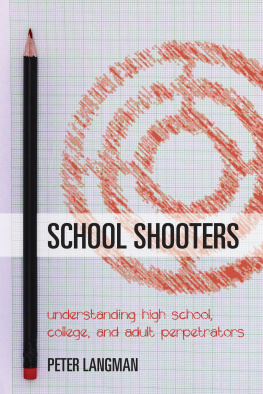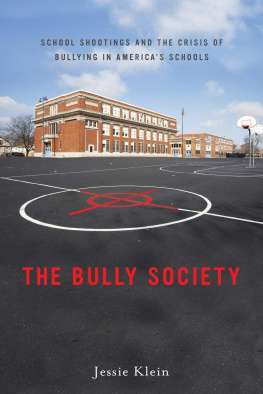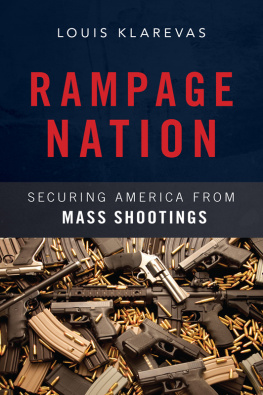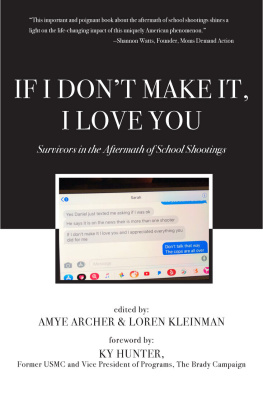Also by Katherine S. Newman
Copyright 2004 by Katherine S. Newman
Published by Basic Books,
A Member of the Perseus Books Group
All rights reserved. Printed in the United States of America. No part of this book may be reproduced in any manner whatsoever without written permission except in the case of brief quotations embodied in critical articles and reviews. For information, address Basic Books, 387 Park Avenue South, New York, NY 100168810
Books published by Basic Books are available at special discounts for bulk purchases in the United States by corporations, institutions, and other organizations. For more information, please contact the Special Markets Department at the Perseus Books Group, 11 Cambridge Center, Cambridge MA 02142, or call (617) 252-5298, (800) 255-1514 or e-mail .
PREFACE
I N THE LATE 1990S, AMERICANS WATCHED IN HORROR AS A WAVE OF MASS shootings on middle and high school campuses swept across the country. Banner headlines and terrifying photos screamed from the front pages of the nations dailies. Round-the-clock television coverage broadcast images of distraught teenagers huddled in the hallways, anguished parents weeping behind police lines, ambulance gurneys wheeling the dead and injured from playgrounds to emergency rooms, and grave stones rising. Columbine High School, in the Denver suburb of Littleton, Colorado, leaped into the public imagination as the nightmare image of the 1990s: children running for cover, police barricaded behind their cars, and a teenage Trench Coat Mafia killing themselves after gunning down twelve students and a teacher and wounding two dozen others.
Congress responded to these events as responsible legislators should have: They tried to uncover the source of this unwelcome trend in order to determine what kind of policies might put an end to it. In 1999 the House of Representatives added a provision to the Missing, Runaway, and Exploited Childrens Act requiring the U.S. Department of Education to study rampage shootings in schools. Representative James Greenwood, a Republican from eastern Pennsylvania who had previously been a social worker, asked the department for research that would explain why such tragedies were occurring in American communities that appeared to be so safe. Greenwood was not after a raft of numbers. What he wanted was a set of in-depth community studies. The Department of Education in turn contacted the National Academy of Sciences, the most prestigious research organization in the country, which has provided scientific advisers to every administration since Abraham Lincolns.
I (KSN) was surprised to get a call from the Academy asking for my help in this effort. As a professor at Harvard Universitys Kennedy School of Government and Dean of Social Science at the Radcliffe Institute of Advanced Study, I have authored a number of books on urban poverty and the consequences of economic stress for American families but knew little about the sociological study of crime. However, as the mother of teenagers, and as a social scientist as perplexed as anyone by the sudden eruption of violence in such unlikely places, this study seemed a useful opportunity to put years of training to good use.
I had another reason for answering the congressional call. As director of a new doctoral program in government, sociology, and social policy, I wanted to find ways to demonstrate the programs commitment to scholarship in the public interest. I approached four doctoral candidates in the program and persuaded them to devote the next two years to the question of rampage shootings. Joining the team were Cybelle Fox, a graduate of the University of California at San Diego who studies race, immigration, and the politics of redistribution; David J. Harding, a Princeton graduate whose research focuses on the consequences of concentrated poverty in the inner city; Jal Mehta, a Harvard College graduate who is studying the relationship between education reform and broader social, economic, and cultural changes in American life; and Wendy Roth, a Yale graduate whose work is devoted to understanding the racial identities of Latino immigrants.
In the summer of 2000, Harding and Mehta moved to Heath, Kentucky, and Fox and Roth to Westside, Arkansas, the two communities we studied at close range about three years after each had gone through the ordeal of a rampage shooting. I spent time in both communities. This book is based on interviews with 163 people in Heath and Westside along with neighboring communities, including families of the victims, students who were in the schools at the time of the shootings as well as current students who were not, teachers, administrators, lawyers, officials of the court, psychologists, newspaper and television reporters, and friends, family members, and fellow congregation members of the shooters.We reviewed the national and local news coverage of these two cases as well as the other rampage school shootings that have taken place in the past thirty years. The five of us used up many yellow legal pads sketching out and then refining the analyses we present here.This volume is the product of a complete team effort, from the early days of planning the research, to collecting and analyzing the data, all the way through the writing and rewriting of numerous drafts. Although I wrote the final draft so that the book would have a single voice, each coauthor contributed chapters, and we discussed them as an ensemble.This kind of partnership is rare in academic settings, and we are privileged to have been able to work together in this fashion.
The topics covered here are sensitive ones for the survivors and the families of victims.We asked people who sent their children off to school one morning only to have to identify their bodies at the morgue in the afternoon to revisit terrible images and painful memories. Heath and Westside are still traumatized by what they endured and are struggling to put the experience behind them. Some people, quite understandably, will never be able to do so. Family members of the shooters carry an unbearable burden of guilt and shame. They still love their boys, and they want them to be able to do some good in this world. Everyone we talked to in our interviews had to relive a tragedy they have been trying to get over.
We would like to have been able to acknowledge them all by name, but we must abide by our promise to protect their anonymity and refrain from naming most of them.As we explained to our interview subjects, this was not possible in all cases. The shooters, their families, and many other key characters were subjected to national media exposure, and because it would have been impossible to disguise their identities, we did not attempt to do so. Likewise, we felt it would dishonor the dead and the wounded to camouflage their identities. Hence we have used the real names of those who died and members of their families; the children and teachers who were wounded; and some of the local government officials, officers of the court, psychiatrists, and school officials whose names were already well known from the media coverage.

